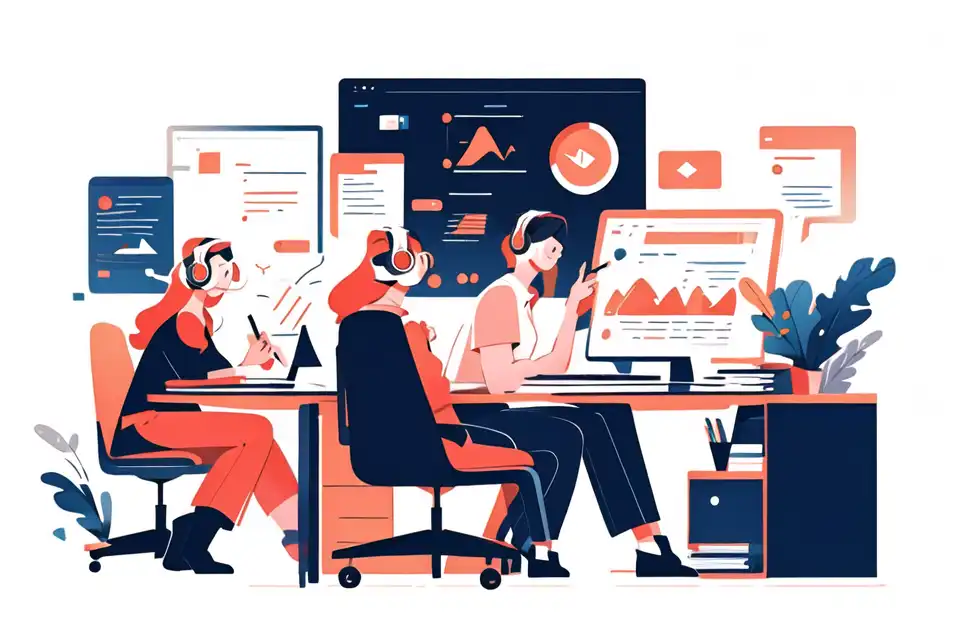How to Address Underperformance Issues Professionally
Master the art of professional communication in business settings with expert guidance. Learn how to address underperformance issues professionally.
Try Lark for Free
Addressing underperformance issues professionally is essential for creating a positive work environment and ensuring fair and equitable treatment of employees. Effective strategies for addressing underperformance not only benefit individual employees but also contribute to the overall productivity and success of the organization.
Why is it important to understand how to address underperformance issues professionally
It is crucial to understand how to address underperformance issues professionally for various reasons, such as maintaining a positive work environment, ensuring fair treatment of employees, and maximizing productivity.
- Importance of Fair and Equitable Treatment Creating an environment where all employees are treated fairly and equitably is vital for sustaining a positive and inclusive workplace culture. Addressing underperformance issues professionally demonstrates the organization's commitment to upholding these values.
- Maintaining Workforce Productivity By addressing underperformance in a professional manner, organizations can motivate employees to improve their performance, contributing to overall workforce productivity and efficiency.
- Creating a Positive Work Environment Professional handling of underperformance issues fosters a positive work environment where employees feel supported, valued, and empowered to succeed, leading to higher morale and job satisfaction.
Use Lark Messenger to elevate your team communication.
Practical examples of dealing with how to address underperformance issues professionally
Example 1
Example 1
A typical scenario when you don’t know how to address underperformance issues professionally
In this scenario, a manager notices that an employee's performance has been consistently below expectations. Instead of addressing the issue directly, the manager avoids the conversation, hoping the situation will improve on its own.
Common mistakes made in this scenario
-
Lack of Constructive Feedback
-
Avoidance of Accountability
-
Failure to Provide Support
Best expression in quotes for the scenario
"I noticed that your performance hasn't been up to par, but I'm confident that with our support, you can improve. Let's discuss how we can work together to enhance your performance."
Example 2
Example 2
A typical scenario when you don’t know how to address underperformance issues professionally
An employee consistently fails to meet deadlines and deliverables. Instead of addressing the issue directly, the supervisor becomes increasingly frustrated and confrontational, leading to a strained work relationship.
Common mistakes made in this scenario
-
Reactive Communication
-
Lack of Constructive Guidance
-
Deteriorating Team Dynamics
Best expression in quotes for the scenario
"I've noticed some challenges in meeting deadlines. Let's work together to identify any obstacles and develop a plan to overcome them."
Example 3
Example 3
A typical scenario when you don’t know how to address underperformance issues professionally
An employee has been exhibiting signs of disengagement and decreased productivity. Instead of exploring the underlying reasons, the manager dismisses the behavior, assuming it will resolve itself.
Common mistakes made in this scenario
-
Disregarding Employee Concerns
-
Ignoring Early Warning Signs
-
Failing to Provide Resources
Best expression in quotes for the scenario
"I've noticed a change in your performance and attitude. I want to understand how we can support you to ensure you're working at your best."
What are the consequences of not knowing how to address underperformance issues professionally
Neglecting or mishandling underperformance issues can have serious ramifications for businesses and employees.
- Impact on Team Dynamics Mismanaged underperformance can lead to resentment and conflict among team members, affecting collaboration and morale within the team.
- Decreased Productivity Untackled underperformance results in decreased productivity, missed deadlines, and an overall decline in work output.
- Legal and Ethical Implications Failure to address underperformance in a professional manner can lead to legal implications, such as claims of unfair treatment, discrimination, or wrongful termination.
Learn more about Lark x Communication
Use Lark Messenger to elevate your team communication.
Methods of phrasing how to address underperformance issues professionally
Effectively communicating and addressing underperformance issues professionally is crucial for achieving positive outcomes. Using the right methods and phrasing can ensure clarity, empathy, and support throughout the process.
-
Constructive Feedback: Providing feedback that focuses on specific behaviors and outcomes, offering both praise and constructive criticism to encourage improvement while maintaining motivation.
-
Setting Clear Expectations: Clearly articulating performance expectations, measurable goals, and actionable steps for improvement, ensuring the employee understands the standards and support available.
-
Using Performance Improvement Plans: Developing and implementing structured performance improvement plans that outline specific objectives, action steps, and support resources to facilitate the employee's development.
Do's and don'ts when you don't know how to address underperformance issues professionally
Do's
| Do's |
|---|
| Establishing Clear Performance Expectations |
| Providing Constructive Feedback |
| Offering Support and Resources |
Don'ts
| Don'ts |
|---|
| Ignoring Underperformance Issues |
| Using Confrontational Language |
| Overlooking Individual Circumstances |
Conclusion
By understanding and implementing effective strategies for addressing underperformance issues professionally, organizations can foster a culture of accountability, fairness, and continuous improvement. These strategies play a crucial role in maintaining a positive work environment and enhancing overall organizational performance.








